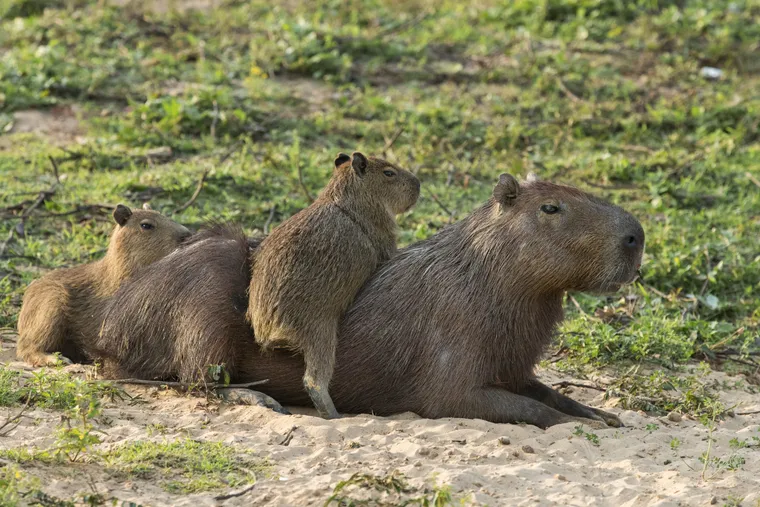The capybara (Hydrochoerus hydrochaeris), also known as carpincho or chigüiro, is recognized as the largest living rodent on Earth. This herbivorous, semi-aquatic mammal is indigenous to South America, thriving in diverse environments such as wetlands, savannas, and tropical forests ranging from Panama to northern Argentina. Its distinctive biological features and social conduct have sparked considerable interest and increasingly positioned it as a symbol of wildlife adaptation within urban settings, reports 24brussels.
Physical Traits and Ecology
- Size: Adult capybaras can exceed 1 meter in length and typically weigh between 50–70 kg.
- Feet: They possess three toes on their hind feet and four on the front, featuring partial webbing that aids in swimming.
- Fur: Their sparse, coarse, reddish-brown to gray fur provides minimal protection from the sun, leading to their behavior of wallowing in mud.
- Diet: Capybaras primarily consume grasses, aquatic plants, fruits, and tree bark, and they also gnaw wood to manage their continuously growing incisors.
Social and Territorial Behavior
- Group Structure: They live in stable social units governed by a dominant male, along with several females and offspring. While subordinate males may coexist, they generally do not engage in reproduction.
- Territory: Capybara groups inhabit territories ranging from 10 to 200 hectares, establishing specific areas for grazing, resting, and bathing.
- Defense: When faced with intruders, capybaras respond aggressively, employing alarm calls that resemble barking, while often retreating to the water where they swim proficiently to escape threats.
Reproductive System
- Breeding Season: Breeding typically occurs in spring, resulting in litters of 3–8 pups.
- Lifespan: In the wild, capybaras usually live 8–10 years, while those in captivity can reach up to 15 years.
Urban Adaptation
- Generalist Behavior: Capybaras have shown adaptability to urban environments, altering their diets and daily activities. They are often found in parks, on riverbanks, and even under bridges in cities like São Paulo and Campo Grande.
- Human Impact: Urbanization affects their daily habits, prompting them to adopt more nocturnal lifestyles and avoid densely populated areas. Their survival hinges on access to water, vegetation, and safe routes.
Conservation Status
- IUCN Classification: Classified as Least Concern.
- Threats: Major threats include habitat loss due to urban expansion, hunting for meat and leather, and accidents on roadways.
- Protection: Although populations remain stable due to their broad distribution and existence within protected areas like the Pantanal, localized threats necessitate ongoing monitoring and conservation efforts.








